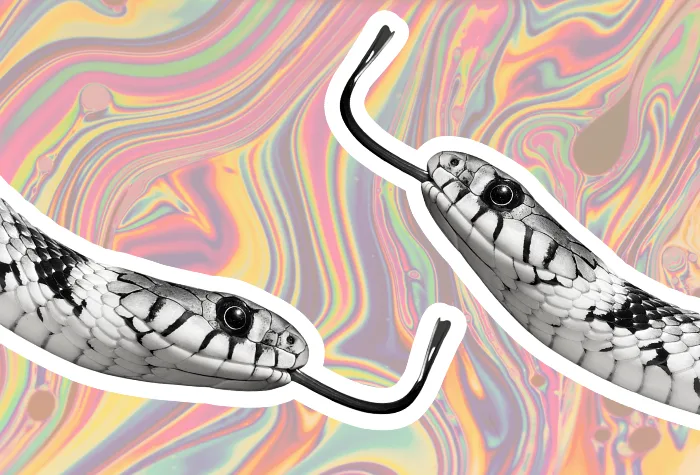
All modern snakes evolved from a few survivors of Cretaceous mass extinction
There are a lot of different snakes on Earth, and there's a good chance they all have common ancestors.
Currently, there are about 4,000 living snake species. That's a lot of diversity, and a new study suggests all snakes - from the mighty python to the humble garter snake - evolved from a few species that survived the dinosaur-killing asteroid that hit Earth millions of years ago.
The authors think some Cretaceous snakes prevailed because they were able to live underground for long periods without food. They simply 'hid out' while the aftermath of the asteroid killed off nearly every living creature above ground.
When the snakes emerged, most of their competitors were gone, and they moved into new environments and diversified.

Stylized image created by Cheryl Santa Maria. Snake photo courtesy: WikiImages/Pixabay
For their paper, scientists analyzed fossils and the genetic makeup of modern snakes. This showed a change in the shape of snake vertebrae following the asteroid impact.
New lineages - including vipers, cobras, garter snakes, boas, and pythons began to emerge as snakes settled into new environments.
"Fossils also show a change in the shape of snake vertebrae in the aftermath, resulting from the extinction of Cretaceous lineages and the appearance of new groups, including giant sea snakes up to 10 meters long," the study's authors said in a statement.
The paper also identified a second large-scale diversification event around the start of the Ice Ages.
"The patterns seen in snakes hint at a key role for catastrophes—severe, rapid, and global environmental disruptions—in driving evolutionary change," the authors say.
The paper appears in the journal Nature Communications.











